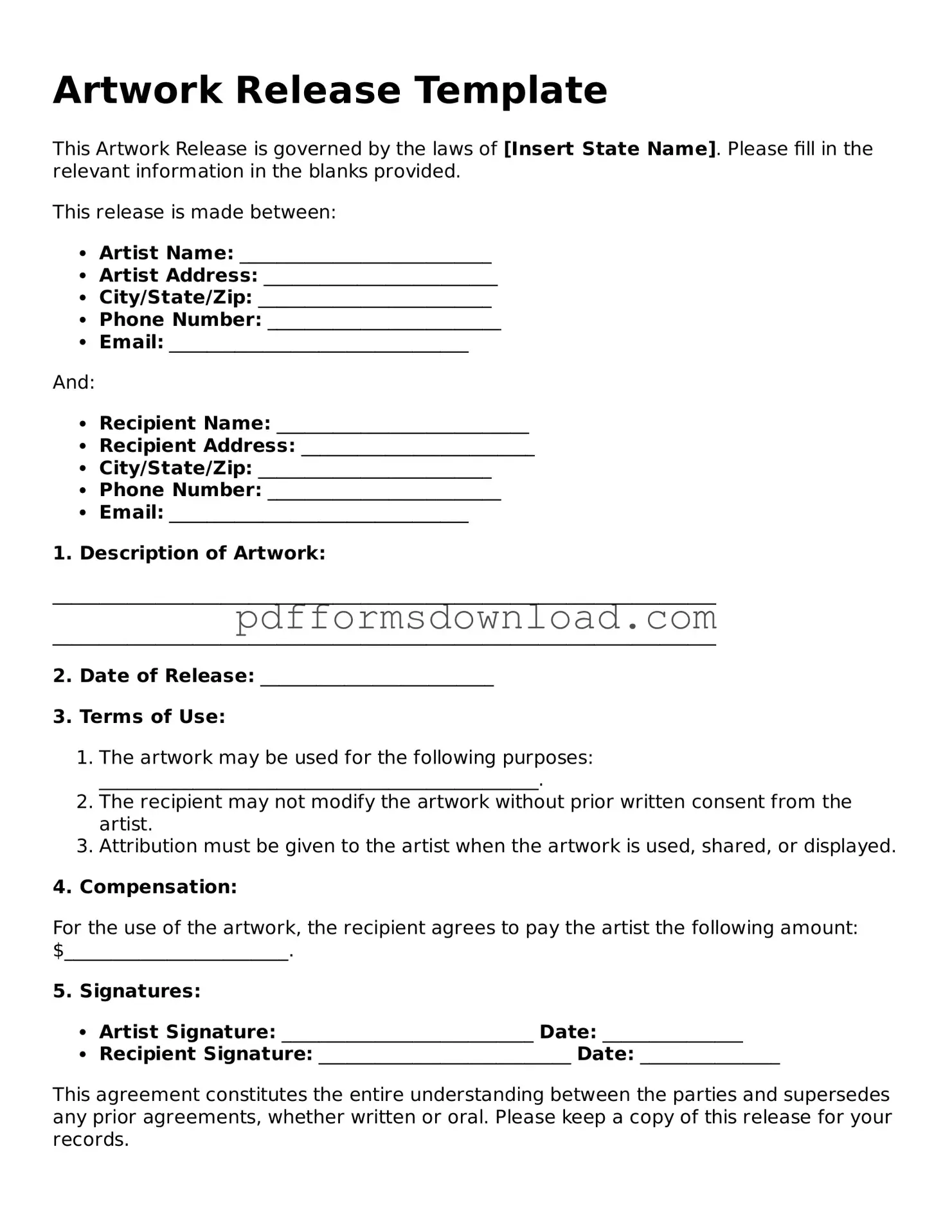What is an Artwork Release form?
An Artwork Release form is a legal document that allows an artist or creator to grant permission for the use of their artwork by another party. This form outlines the rights being transferred and the specific uses permitted, ensuring that both the artist and the user understand their rights and obligations regarding the artwork. It helps protect the artist's intellectual property while also providing clarity for the user about how they can use the artwork.
Who needs to sign the Artwork Release form?
Typically, both the artist and the party wishing to use the artwork must sign the Artwork Release form. The artist retains ownership of the artwork but allows the other party to use it under the terms specified in the document. This could include businesses, publishers, or individuals who want to reproduce or display the artwork. Ensuring that both parties sign the form helps prevent misunderstandings and potential legal disputes in the future.
What types of uses can be included in the Artwork Release form?
The Artwork Release form can specify a variety of uses for the artwork. Common examples include reproduction in print or digital media, use in promotional materials, and display in galleries or exhibitions. The form can also define whether the usage is exclusive or non-exclusive, meaning whether the artist can grant the same rights to others. It is important to clearly outline all intended uses to avoid any ambiguity.
Is the Artwork Release form legally binding?
Yes, the Artwork Release form is legally binding once it is signed by both parties. This means that both the artist and the user are obligated to adhere to the terms outlined in the document. If either party fails to comply with the agreement, the other party may have legal recourse. It is advisable to keep a copy of the signed form for future reference and to ensure that all parties are aware of their rights and responsibilities.
Can the Artwork Release form be modified after it has been signed?
Once the Artwork Release form is signed, it is generally considered a final agreement. However, modifications can be made if both parties agree to the changes. It is essential to document any amendments in writing and have both parties sign the revised agreement. This helps maintain clarity and ensures that all parties are on the same page regarding the use of the artwork.
